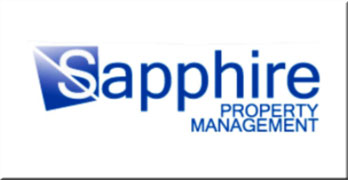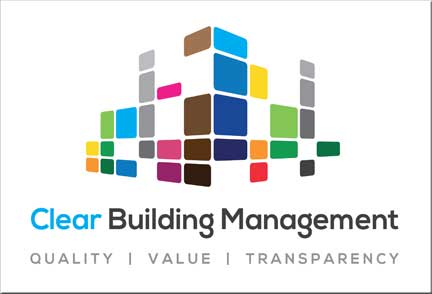With their legally enforceable income streams – and extreme vulnerability in legal disputes – leasehold properties are the basis of a multi-billion pound speculative business. Now the flawed, freeholder-friendly model of valuing leasehold deferment rates are sneaking into the dubious equity release loan market.
Here an ex-Bank of England economist explains to LKP readers his deep concerns and urges you to express your views …
By Dean Buckner
 The Prudential Regulation Authority (PRA) recently published a consultation paper (CP 13/18) on the valuation of equity release mortgages.
The Prudential Regulation Authority (PRA) recently published a consultation paper (CP 13/18) on the valuation of equity release mortgages.
At first sight the consultation would seem to have little connection with leasehold valuation.
However, the PRA valuation model considers equity release as effectively extending a lease to the borrower until the time of ‘exit’ (i.e. death or long term care), and so the PRA has developed a methodology for estimating the deferment rate, i.e. the discount rate that is applied to the current property value to obtain the deferment price, with the deferment price being the price that would be agreed and settled today to take ownership of the asset at some point in the future, i.e. a form of freehold price.
The deferment rate is crucial to valuing leasehold extensions.
Broadly speaking, a higher rate makes the extension cheaper, hence more favourable to the tenant; a lower rate makes it more expensive, hence more favourable to the landlord.
The PRA considers a 2% rate to be the ‘best estimate’, with 1% or less being ‘difficult to justify’.
Importantly, the paper rejects the use of the Sportelli formula, which has been used in land tribunals since 2005 to decide the premium payable by a leaseholder to extend the lease.
The paper notes (p.9) that it does not consider Sportelli ‘as a reliable current estimate for the deferment rate, other than to note that it supports estimates greater than 0%’. It then mentions two other methods that have been used to come up with an estimate, one of them set out in a recent Bank of England working paper by Bracke, Pinchbeck and Wyatt. The authors may be familiar to leaseholders on account of their ‘Parthenia model’ that was recently rejected by the court of appeal in January 2018.
Property tribunal upholds lease extension ‘scandal’ that pays millions to freeholders
The PRA decision to reject the Sportelli model is welcome, in my view.
However, the PRA does not give any reason or evidence for deciding on a value of 2%.
Leaseholders should be concerned that a new precedent may have been set without any published methodology or working, with only a vague allusion to the method used (net rental yield? Parthenia? which?).
I will be writing to the PRA on my own behalf – I am also working with Professor Kevin Dowd of Durham University on a more precise and evidence-based calibration.
Leaseholders should feel free to write as well.
Their concern should be that CP 13/18 sets a precedent, that no working or evidence has been given, and that while the insurance industry has been continuously lobbying for their own interest (for example, Treasury Committee July 11 2018), leaseholders so far have had no voice.
The work of the PRA is welcome in that it aims at a more scientific and evidence-based approach to pricing leaseholds.
However, it is a worry that a large group of stakeholders has been so far ignored, and that the methodology has not been published.
Leaseholders should be asking for, and getting a place at the table, and the PRA should be making its thinking much clearer.
Write to:
Prudential Regulation Authority 20 Moorgate London EC2R 6DA
Email: CP13_18@bankofengland.co.uk
Dean Buckner worked at the FSA and then the Prudential Regulation Authority and Bank of England for nearly 20 years, specialising in derivative and asset valuation and capital modelling in both the banking and life insurance sector. He is now retired from the Bank. He and Professor Dowd have a website addressing the financial health of bank and insurance companies and campaigning for regulatory reform:
The Eumaeus Project
Kevin Dowd 13 August 2018 Yesterday’s (12 August) Sunday Express on my Equity Release report, Asleep at the Wheel: The Prudential Regulation Authority and the Equity Release Sector, had some interesting comments from Steve Lowe, a director at specialist retirement group Just.






 Keep raising leasehold with Advertising Standards Authority
Keep raising leasehold with Advertising Standards Authority






















“PRA has developed a methodology for estimating the deferment rate, i.e. the discount rate that is applied to the current property value to obtain the deferment price, with the deferment price being the price that would be agreed and settled today to take ownership of the asset at some point in the future, i.e. a form of freehold price”.
Thank you (I think), Mr Buckner, for the explanation.
If you read the article carefully you will appreciate that the lowering of the risk free rate is proposed to ensure that the fund does not over distribute profits – it has no impact on the those that have taken out equity release plans. Its relevance to leaseholders is that it is evidence of a continuing fall in the risk free rate since Sportelli some eleven years ago. As the rate they are proposing for the risk free rate will have been subject to critical intellectual debate this poses a nasty worry for those seeking to introduce a “10 yp fits all” yet those who advance such a simple formula are selective in their criticism of such a rate and are happy to support a low risk free rate in the following circumstances when it suits them
For example if you were seriously injured by a third party at fault then the amount you would receive in damages would increase significantly as a result of the risk free rate being lowered ( The Ogden rate was lowered in 2017 from 2.5 to MINUS 0.7%). This cause cash settlements to rise significantly
If you were in a final salary scheme and wished to take your pension pot and invest it yourself the amount you would receive has increased enormously in the last few years as a result of the lowering of the risk fee rate
Those (but not all) who own other property would have seen its value increase in the last few years due to lowering of interest rates
Those with mortgages have for many years being paying very low rates of interest because of the collapse in interest rates
Holders of stocks and shares and gilts again can attribute the increase in value over the last few years to in part low interest rates
So whilst the collapse in the risk free rate has produced gains for quite a few of us there will be those who lose out as the cost of lease extensions and enfranchisement claims will have risen. Demanding legislation to be brought in to address this problem seems unfair when all the other cases I have outlined above won’t be subject to any windfall tax or clawback.
The deferment rate should not be confused with the interest rate. It is fairly insensitive to changes in the interest rate, because it is a proxy for net rental yields, which incorporate an element of RPI. Indeed, rental cost is a component of RPI, if I am not mistaken.
Whilst I understand the concept of Equity Release Funding for freehold properties,how does it work for leasehold properties, especially if the leases are running down?
And would it be possible to use Equity Release for a retirement developments where values have so dramatically collapsed?